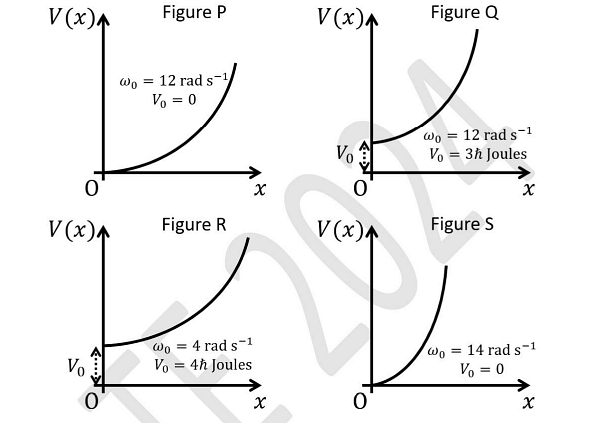Question
Physics Question on Magnetism and matter
A particle of mass m is moving in the potential
V(x)=⎩⎨⎧V0+21mω0P2x2∞if x>0if x≤0
Figures P, Q, R, and S show different combinations of the values of ω0 and V0.

Let Ej(P), Ej(Q), Ej(R), and Ej(S) with j=0,1,2,…, be the eigen-energies of the j-th level for the potentials shown in Figures P, Q, R, and S, respectively. Which of the following statements is/are true?
A
E0(P)=E0(Q)
B
E0(Q)=E0(S)
C
E0(P)=E0(R)
D
E0(R)=E0(Q)
Answer
E0(Q)=E0(S)
Explanation
Solution
The correct Answers are (B):E0(Q)=E0(S),(C):E0(P)=E0(R),(D):E0(R)=E0(Q)
